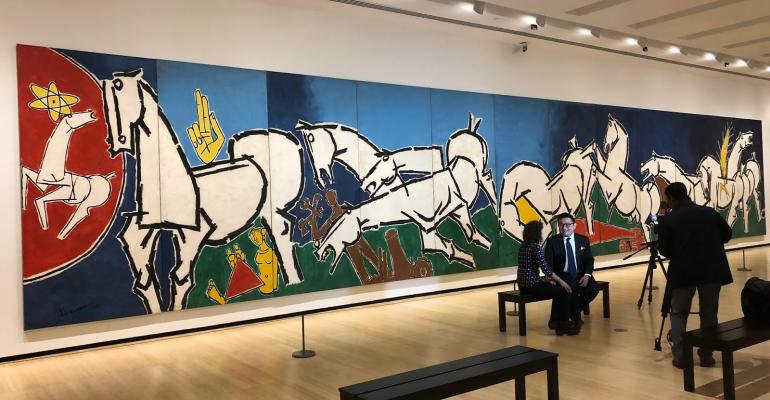On Jan. 21, 2022, TamarindArt LLC, a collector and dealer of Indian art, sued the administrators of the estate of artist Maqbool Fida Husain for a declaration that Tamarind’s nonfungible token (NFT) project of Husain’s artwork didn’t infringe any of the estate’s rights. According to the complaint, in 2002, Tamarind purchased a 60-foot-long mural by the artist entitled Lightning (1975) for $400,000 (per the complaint, the work was often called “the Guernica of India”). Recently, Tamarind launched a campaign to sell NFTs based on the artwork. In response, the estate sent Tamarind a cease-and-desist letter stating that Tamarind’s plans to sell NFTs based on the artwork would violate the estate’s copyright interests in the work.
Tamarind seeks a judicial ruling that its planned NFTs wouldn’t infringe any rights held by the estate. (Tamarindart, LLC v. Husain et al., Index No. 1:22-cv0595-AT (S.D.N.Y.)) Per Tamarind, as part of the purchase, the artist signed a bill of sale, granting Tamarind title to the work and an “exclusive, royalty free, worldwide license…to display, market, reproduce and resell all or any part of the artwork, including all intellectual property in respect thereof.” Tamarind also alleges that it and the artist signed a further agreement in 2003 in which the artist agreed “that all artworks already purchased or created for Tamarind/affiliates are considered copyright protected property of Tamarind or its affiliates,” which, per Tamarind, extinguished any residual rights the estate may have had in the artwork and made Tamarind the copyright owner of the work. The estate, for its part, hasn’t yet filed a response to the complaint.
Questions Raised
The case raises questions about the rights to mint NFTs based on artwork. Ordinarily, under U.S. law, an artist retains the copyright in a work (which includes the exclusive right to reproduce and distribute images of the work) after its sale, absent an agreement granting the purchaser a license or assignment of copyright. Here, the case will require the court to interpret and apply the agreements the parties are alleged to have signed to determine whether Tamarind has the necessary rights to mint. Given the recent flurry of activity in the NFT space and the rush to market, we can expect to see more disputes arising over the sale and marketing of NFTs based on creative properties.





